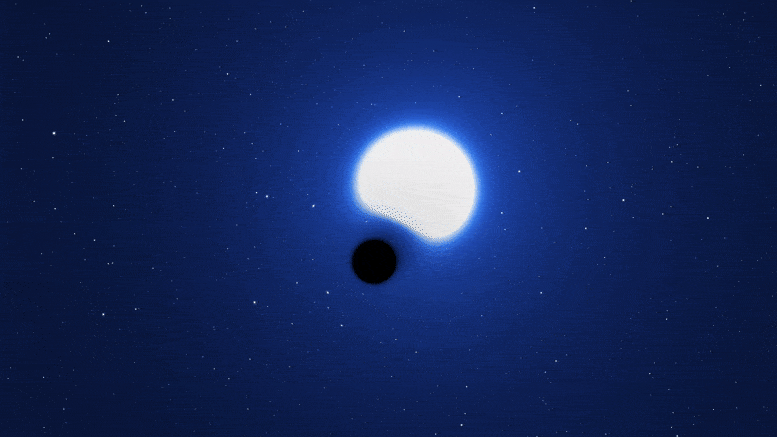
A group of experts from around the world known for debunking black hole claims have found something interesting in one of the Milky Way’s neighbors, the Large Magellanic Cloud. The group, which includes one scientist nicknamed the “black hole destroyer,” has discovered a dormant stellar-mass black hole, the first ever discovered outside of our home galaxy.
Stellar-mass black holes are made when giant stars reach the end of their lives and collapse under their own weight. In a binary, a system of two stars that orbit around each other, this process creates a black hole that orbits with a bright companion star. The black hole is said to be “dormant” if it doesn’t emit high levels of X-ray radiation, which is how most black holes are found. This also means that black holes that are dormant are hard to discover because they don’t interact with their surroundings as you would find in a normal black hole.
“It is incredible that we hardly know of any dormant black holes, given how common astronomers believe them to be”, explains co-author Pablo Marchant of KU Leuven.
The newly found black hole is at least nine times the mass of the Sun, and orbits a hot, blue star weighing 25 times the Sun’s mass. The discovery was made thanks to six years of observations obtained with the European Southern Observatory’s (ESO’s) Very Large Telescope (VLT) using the Fibre Large Array Multi Element Spectrograph (FLAMES) instrument which was trained on the Tarantula Nebula.
“For the first time, our team got together to report on a black hole discovery, instead of rejecting one,” says study lead Tomer Shenar, a Marie-Curie Fellow at Amsterdam University in the Netherlands. “As a researcher who has debunked potential black holes in recent years, I was extremely skeptical regarding this discovery.”
To find the black hole, called VFTS 243, the group looked at nearly 1,000 massive stars in the Tarantula Nebula area of the Large Magellanic Cloud looking for stars that could have black holes as companions. Identifying these companions as black holes is extremely difficult, as so many alternative possibilities exist.

Kareem El-Badry, a co-author and part of the Center for Astrophysics | Harvard & Smithsonian (CfA) who was given the “black hole destroyer” moniker, also had reservations about this black hole candidate at first.
“When Tomer asked me to double-check his findings, I had my doubts. But I could not find a plausible explanation for the data that did not involve a black hole,” he said.
The discovery also gives the team a unique look at the processes that happen when black holes are born. The general consensus between astronomers is that a stellar-mass black hole is created when the core of a massive star that is dying collapses, but it is still not clear if this also causes a powerful supernova explosion.
“The star that formed the black hole in VFTS 243 appears to have collapsed entirely, with no sign of a previous explosion,” Shenar said. “Evidence for this ‘direct-collapse’ scenario has been emerging recently, but our study arguably provides one of the most direct indications. This has enormous implications for the origin of black-hole mergers in the cosmos.”
Even though they are called the “black hole police,” the team welcomes scrutiny. They hope that their work will help find the thousands of other stellar-mass black holes that are thought to orbit massive stars in the Milky Way and the Magellanic Clouds.
The findings appeared in the journal Nature Astronomy.









